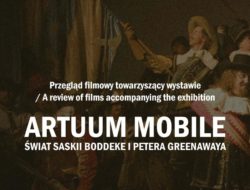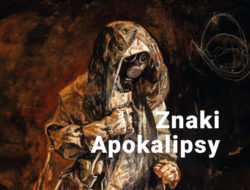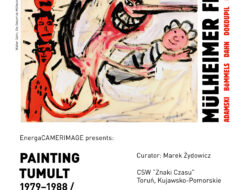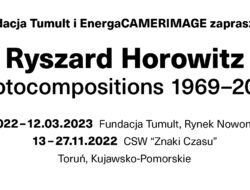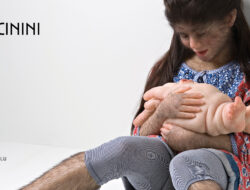The Seventh Seal / Det sjunde inseglet (1957)
Written and directed by Ingmar Bergman
Cinematography: Gunnar Fischer
Starring: Max von Sydow, Gunnar Björnstrand, Bengt Ekerot, Nils Poppe, Bibi Andersson
Running time: 96 mins
Country: Sweden
The film bears a thematic and stylistic resemblance to a medieval morality play. It tells the story of a knight who encounters a personification of Death on his way back from a crusade. He challenges Death to a game of chess for his life, and tries to prolong the duel in order to find answers to questions concerning existential matters. Their philosophical dialogues help to save a family of wandering artists.
The characters display influences of both Protestantism and Existentialism. Visual inspiration for the film can be found in the works of Albertus Pictor and Albrecht Dürer, as well as in Scandinavian and German silent cinema. The script also shows Bergman’s literary and theatrical fascination with the plays of August Strindberg.
The allegorical representations of Death and the danse macabre trope have become some of the most iconic images in the history of cinema.
Andrei Rublev (1966)
Directed by Andrei Tarkovsky
Written by Andrei Konchalovsky, Andrei Tarkovsky
Cinematography: Vadim Yusov
Starring: Anatoly Solonitsyn, Ivan Lapikov, Nikolai Grinko, Nikolai Sergeyev
Running time: 183 mins
Country: Russia
The protagonist of the film is the medieval Russian monk, Eastern Orthodox saint, and iconographer Andrei Rublev. Not much is known about his life, and his scant biography served director Andrei Tarkovsky as a starting point for a tale about a man who perceives art as a form of religious worship. It is through his icons that Rublev expresses his faith in the meaningfulness of human existence. The plot is divided into parts, depicting different stages of Rublev’s spiritual development, such as his journey through the country ravaged by violence and suffering, his experience of sensual love, and a creative crisis caused by the atrocities of the world around him. The combination of the film’s subject matter, its slow-paced story, and the poetic quality of its cinematography encourages the audience to meditate upon what they see on the screen, and contemplate it from a moral perspective. The epilogue features a sequence of icons created by Rublev.
Edvard Munch (1974)
Written and Directed by Peter Watkins
Cinematography: Odd Geir Sæther
Starring: Geir Westby, Gro Fraas, Johan Halsbog, Eli Ryg
Running time: 210 mins
Country: Sweden/Norway
Like many other titles directed by Peter Watkins, this work is a hybrid of a documentary and a feature film. The narrative part tells the story of the life and art of Edvard Munch. We witness the events which shaped the protagonist as a man and artist, and watch the creation of his famous paintings. In the documentary part, cast members speak directly to the camera. The effect of authenticity is amplified by the fact that the characters are played by amateur actors. Conversations with them resemble television interviews. They tell us about themselves and express their opinions on Munch. The film also features the director’s commentary on the notes from Munch’s journal. The overall style is in equal parts biographical, educational, and journalistic. The skilful combination of these forms makes Watkins’ film a one-of-a-kind cinematic essay on Edvard Munch.
Jörg Ratgeb – Painter / Jörg Ratgeb – Maler (1977)
Directed by Bernhard Stephan
Written by Manfred Freitag, Joachim Nestler
Cinematography: Otto Hanisch
Starring: Alois Svehlík, Martin Trettau, Olgierd Łukaszewicz, Małgorzata Braunek
Running time: 101 mins
Country: East Germany
The story of Jörg Ratgeb, a German Renaissance painter known for his illustrations of Biblical scenes. The plot begins in 1517, with the protagonist refusing to create a banner with slogans calling for rebellion. As a punishment, he loses his workshop, along with his drawings. Following this event, he leaves his family and embarks on a journey, during which he lands in prison and barely escapes death. He manages to get back on the road and arrives in Nuremberg, where he meets the famous Albrecht Dürer. Director Bernhard Stephan focuses on providing a realistic, believable account of both the artist’s life, and the historical reality of his epoch.
The Adventures of Picasso / Picassos äventyr (1978)
Directed by Tage Danielsson
Written by Tage Danielsson, Hans Alfredson
Cinematography: Tony Forsberg, Roland Sterner
Starring: Gösta Ekman, Hans Alfredson, Margaretha Krook, Lena Olin
Running time: 115 mins
Country: Sweden
A pastiche of a biographical film, playing with genre conventions and the audience’s expectations. The plot is only loosely based on the life of Pablo Picasso; the director is more interested in exposing the stereotypes concerning art and the creative process. The protagonist encounters numerous absurd situations, and, as a whole, the film can be said to be an ironic portrait of the avant-garde and its achievements. However, it is also a playful tribute to the painter, and the diversity of European culture. The main concept of the film could be paraphrased as an extension of Picasso’s famous statement that “art is a lie that makes us realise truth”.
Paula (2016)
Directed by Christian Schwochow
Written by Stefan Kolditz, Stephan Suschke
Cinematography: Frank Lamm
Starring: Carla Juri, Albrecht Schuch, Roxane Duran, Joel Basman
Running time: 123 mins
Country: France/Germany
The story of Paula Modersohn-Becker, considered to be the forerunner of Expressionism, and the first female European painter to create nude self-portraits and to have an entire museum dedicated to her work. The plot revolves around the protagonist’s struggle for artistic independence. The action takes place at the turn of the 20th century, at a time when it was still difficult for women to pursue careers as artists. Paula lives in an unhappy marriage with her painting teacher Otto Modersohn. She decides to leave the artists’ colony in German Worpswede, and travel to Paris on her own. It is in France that she fully develops her potential and creates her most famed works. Her individuality is expressed on the screen through vibrant, colourful shots, inspired by the style of her paintings.
Author: Radosław Osiński, PhD
Tags: energacamerimage
 The Institution is funded from the budget of Toruń Municipality
The Institution is funded from the budget of Toruń Municipality
